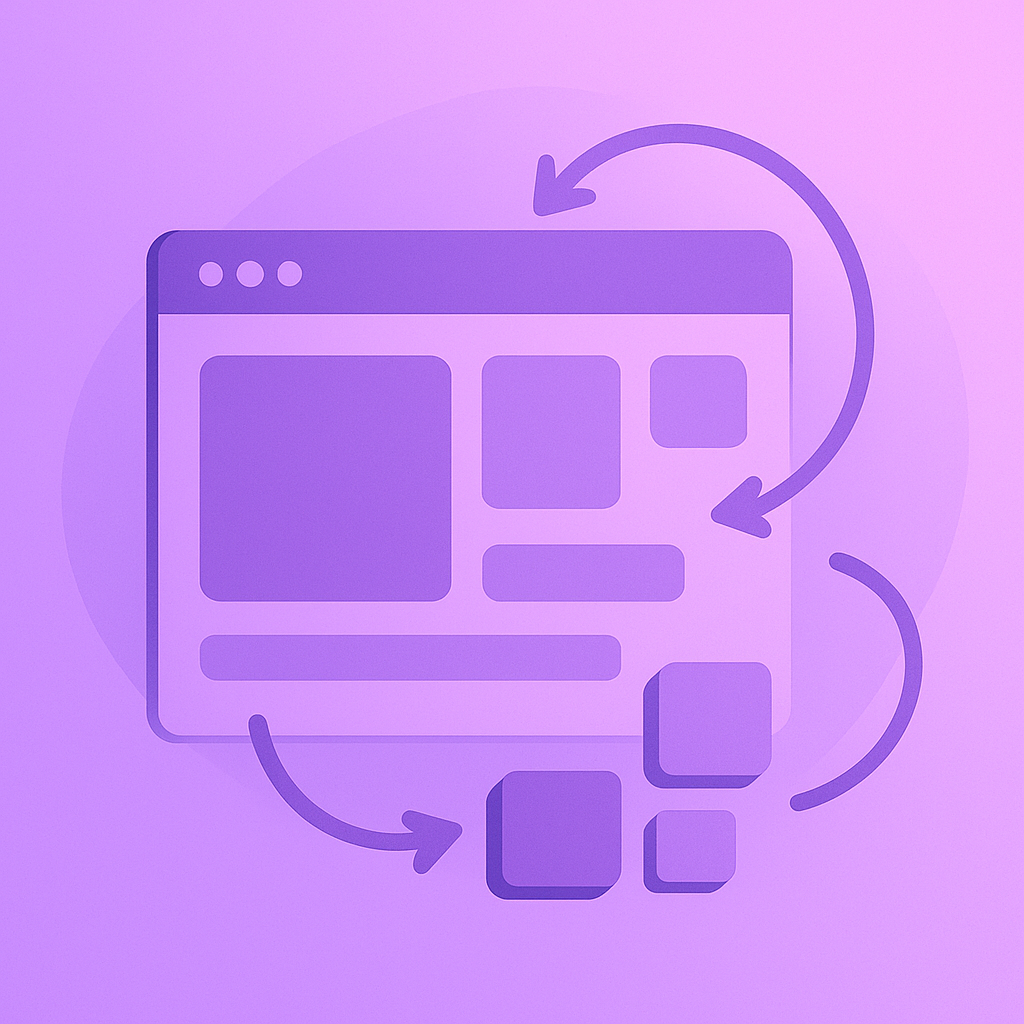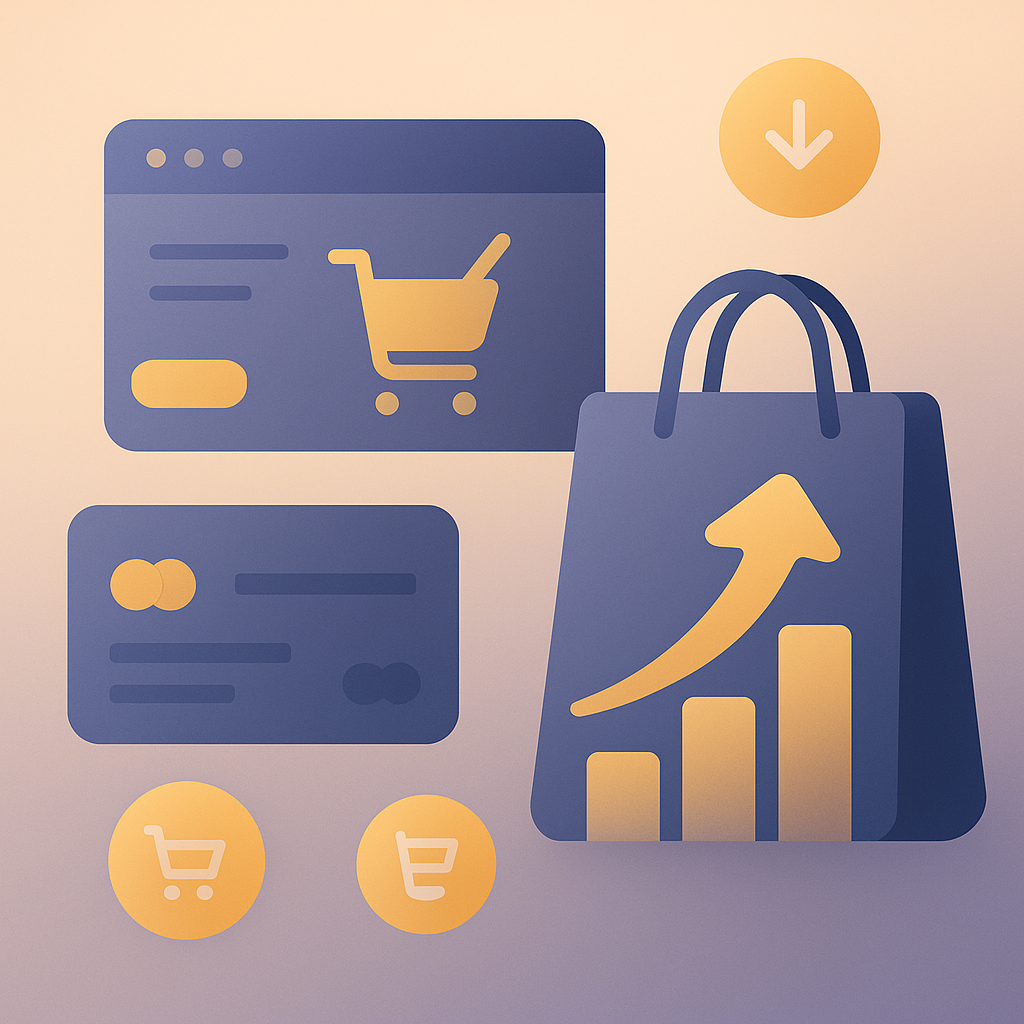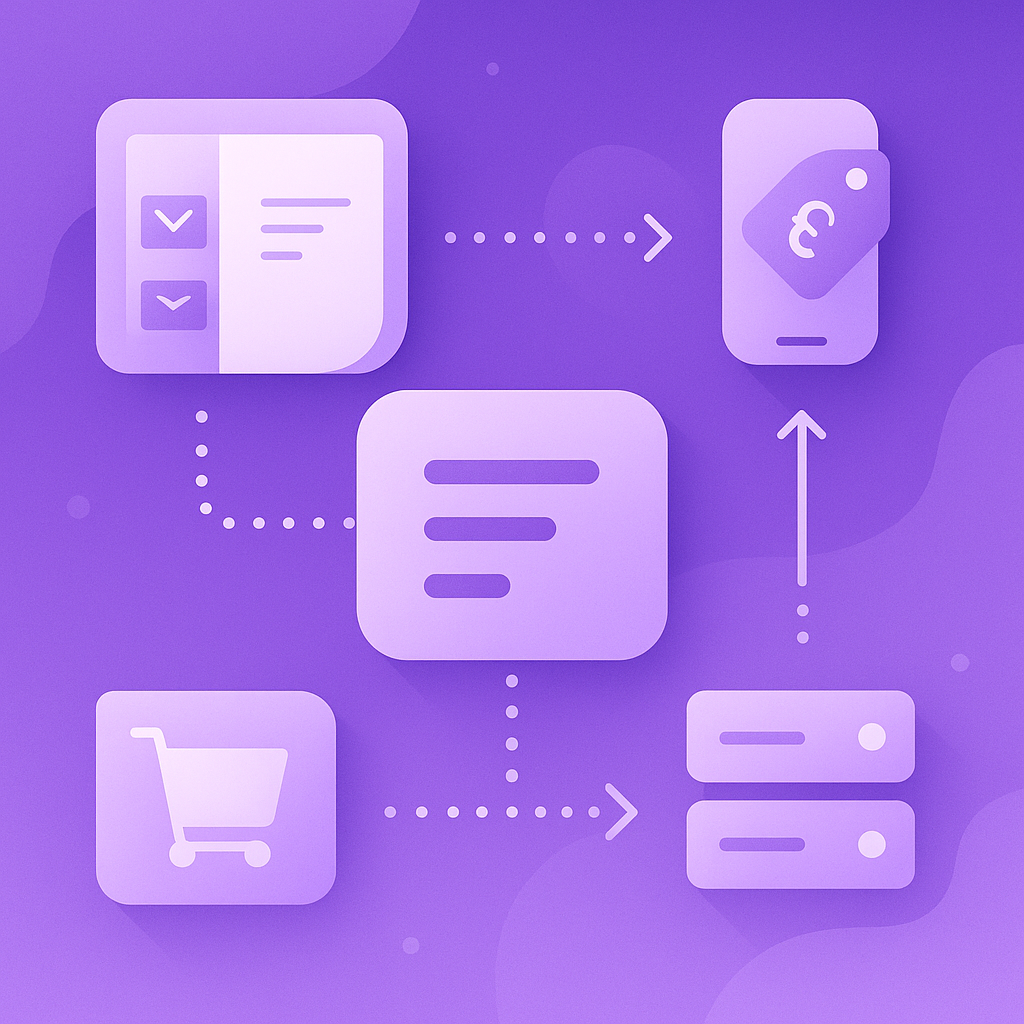Choosing the right e‑commerce platform is one of the most important decisions for any online business. For startups and medium to large businesses alike, two names often top the list: BigCommerce and Shopify. Both platforms offer powerful tools to sell online, but which one is the better fit for your needs? In this friendly and fair comparison, we’ll look at BigCommerce vs Shopify – highlighting Shopify’s strengths while giving BigCommerce its due – and show how you can smoothly migrate to Shopify with a little help from Wolfdev.
BigCommerce and Shopify at a Glance
Shopify and BigCommerce are both all-in-one, cloud-based e‑commerce platforms that let you build an online store without needing to code or host your own site. Each provides a robust set of features out-of-the-box for product management, payments, shipping, and more. According to industry research, Shopify is often rated the “best overall” e‑commerce solution for growing businesses, whereas BigCommerce is sometimes recommended for smaller businesses or niche use cases. In other words, BigCommerce can be a strong choice for a small business getting started, but Shopify tends to excel when your store is ready to scale up.
Both platforms have a large user base worldwide, though Shopify’s community is larger (Shopify powers millions of merchants globally). Each offers reliable hosting, security, and 24/7 support to keep your store running smoothly. Now, let’s break down the key differences and advantages in more detail.
Ease of Use and Initial Setup
For busy entrepreneurs, ease of use is critical. Shopify is widely praised for its user-friendly interface and quick setup process. In hands-on testing, reviewers often find Shopify simpler to get started with, from the sign-up to the store dashboard. Shopify guides new users with an onboarding wizard (asking a few questions about your business and goals) and provides a helpful setup checklist in the admin. The management interface is clean and intuitive, so even non-technical users can navigate tasks like adding products or tweaking the storefront without hassle.
BigCommerce, on the other hand, also offers a straightforward store editor and dashboard, but it can feel a bit more complex at first. Some users report that BigCommerce’s sign-up and onboarding process is a bit more involved – for example, requiring more initial information to start a trial – and its admin interface isn’t quite as immediately intuitive as Shopify’s. This doesn’t mean BigCommerce is hard to use (many merchants run successful stores on it), but Shopify’s interface gets the slight edge for being welcoming to newcomers. In fact, one comparison crowned Shopify as “Easiest to Use” after testing both platforms, noting Shopify felt more approachable whereas BigCommerce’s interface was “a little trickier to understand”.
In short, Shopify makes it easy to get your store up and running quickly. You can pick a theme, add products, set up payments, and launch in very little time. BigCommerce may require a bit more time to familiarize yourself with the dashboard, but once you learn it, you’ll find all the necessary tools are there. Both platforms avoid technical headaches like server setup – everything is hosted for you – but if you value a smooth, beginner-friendly experience, Shopify is often the winner here.
Features and Flexibility
When it comes to selling features, both Shopify and BigCommerce check most of the boxes. They each support unlimited products, inventory tracking, discount codes, basic SEO settings, multi-channel selling (like via Facebook/Instagram, Amazon, etc.), abandoned cart recovery, and more. For the core features needed to run an online store, there’s a lot of parity between the two platforms. You won’t miss out on essential functionality with either one as a small or mid-size business.
The difference emerges in how advanced features are delivered. BigCommerce prides itself on offering many capabilities built-in out-of-the-box, reducing the need for additional apps or extensions. For example, BigCommerce includes features like product ratings/reviews, gift cards, real-time shipping quotes, unlimited staff accounts, and even some B2B-oriented functions (customer groups, bulk pricing) as native features. This can be a big plus if you have complex requirements – BigCommerce’s native toolset is quite robust. In fact, BigCommerce is known for its openness and flexibility: it has a strong API for custom integrations and doesn’t “lock” you into proprietary add-ons. You can often get a lot done on BigCommerce without hunting for external plugins, which enterprise and B2B users might appreciate.
Shopify, by contrast, offers a somewhat leaner core platform but an extensive App Store for extended functionality. Shopify provides all the basics in a clean, efficient way, and if you need something extra – say advanced analytics, subscription billing, or a specific marketing tool – you can likely find an app for it in Shopify’s ecosystem. In fact, Shopify’s app marketplace boasts over 8,000+ third-party integrations and add-ons, far more than BigCommerce’s ~1,200 apps. This huge app selection means Shopify stores can be highly customised to fit unique business needs. Want a loyalty program, a specialized product configurator, or integration with a particular UK shipping service? There’s probably an app or developer solution available on Shopify.
The trade-off is that some Shopify apps come with additional subscription fees, and it takes time to find and install the ones you need. BigCommerce’s approach saves you that effort by including many features natively (so you have fewer add-on costs). One expert summary put it this way: Shopify’s app-heavy model is great for businesses that want a highly customised storefront, whereas BigCommerce provides a comprehensive set of e-commerce features out-of-the-box without needing as many third-party apps. Neither approach is “wrong” – it depends on your preference.
-
If you prefer an all-in-one solution with lots of built-in tools (and maybe you don’t want to worry about managing many apps), BigCommerce might appeal to you.
-
If you value maximum flexibility and choice of integrations to tailor every aspect of your store, Shopify offers an unparalleled ecosystem to do so.
It’s worth noting that because of Shopify’s popularity, many third-party services (from email marketing software to inventory systems) build direct integrations for Shopify first. This means Shopify often has the widest range of compatible services and plugins among e-commerce platforms. BigCommerce’s ecosystem, while smaller, still covers most common needs and continues to grow. Overall, Shopify gives you more breadth of choice, while BigCommerce gives you depth right out of the box.
Design and Customisation Options
A store’s look and branding are crucial for winning customers. Thankfully, both BigCommerce and Shopify offer attractive templates/themes and customisation tools to help you create a professional online storefront. However, Shopify tends to have an edge in design versatility and polish.
Shopify provides a large collection of over 190 pre-designed themes (templates) on its Theme Store, covering a wide range of industries and styles. These templates are known for being modern, mobile-responsive, and easily customizable. Shopify’s themes are created by professional designers and often give your site a sleek, trendy appearance with minimal tweaking. BigCommerce’s theme library is similar in number (it also offers a large selection of free and premium themes), and many BigCommerce themes are quite polished as well. Both platforms offer a set of free themes (Shopify offers 10+ free themes; BigCommerce has a comparable number of free options) and a larger selection of paid themes that typically cost a one-time fee in the range of ~$100–$300.
Where Shopify pulls ahead is the overall diversity and customisation flexibility of its themes. Reviewers often recommend Shopify’s template designs as being more varied and stylish for different business needs. In side-by-side comparisons, Shopify’s themes have been praised for quality of design and ability to adapt to different branding. Of course, BigCommerce themes can also be customised and made to look great – you can modify colors, fonts, and layout sections through BigCommerce’s theme editor. But Shopify’s theme engine (using Liquid templating language) and its robust theme editor are very well-regarded in the web design community, meaning there’s a huge pool of developers and agencies (like Wolfdev!) who specialise in crafting beautiful Shopify stores. If you have a unique vision for your storefront, Shopify likely gives you more creative freedom, either by tweaking an existing theme or building a completely bespoke theme.
Both platforms allow deep customisation if you have coding skills or hire experts. BigCommerce uses a framework called Stencil for theme customisation, whereas Shopify uses its Liquid code and theme API. In practice, you can achieve almost any design on either platform, but it may be easier to find resources and support for advanced Shopify customisation simply due to the larger community.
Bottom line: Shopify and BigCommerce both let you create a professional, branded storefront, but Shopify offers a bit more in terms of out-of-the-box theme variety and an ecosystem of designers to help make your store truly unique. If a bespoke, on-brand look is a priority, you’ll find Shopify a very accommodating platform.
Pricing and Cost Considerations
For any business, cost is an important factor. Shopify and BigCommerce have similar subscription pricing tiers. Both offer plans suitable for small startups up to large enterprises. For example, each has plans in the roughly $29 – $299 per month range for standard offerings (with higher custom pricing for enterprise level). So at first glance, you’re looking at a comparable monthly investment in either platform, with feature sets that align with the price (basic plans for basic features, advanced plans for more tools and lower payment processing rates, etc.).
However, when digging into costs, there are a few differences:
-
Transaction Fees: BigCommerce does not charge any additional transaction fees on any of its plans. This means you only pay the credit card processing fees charged by your payment gateway (e.g., PayPal or Stripe), and BigCommerce doesn’t take a cut of your sales. Shopify’s policy is a bit different – if you use Shopify’s own payment solution (Shopify Payments), Shopify also charges no extra transaction fee (you just pay the card processing rates, which are similar to Stripe fees). But if you choose an external payment gateway on Shopify, Shopify will apply a small transaction fee on each sale (ranging from 0.5% to 2% depending on your plan). Many merchants in the UK and elsewhere simply use Shopify Payments (powered by Stripe) to avoid those extra fees. Still, it’s a point where BigCommerce touts an advantage: your payment processing costs can be lower on BigCommerce if you needed to use an alternative gateway.
-
Built-in vs Add-on Costs: As mentioned, Shopify’s vast app marketplace means you might end up subscribing to a few paid apps for functionalities that BigCommerce might include for free. For instance, features like advanced reports, gift cards, or real-time shipping quotes are built into certain BigCommerce plans, whereas on Shopify you might upgrade your plan or get an app for those. The cost of apps can add up (some are free, but others might be £5-£50 per month each). This doesn’t necessarily make Shopify more expensive across the board – it depends on what features your business needs. Many small businesses find they can run a Shopify store just fine on the base plan with no paid apps. But a feature-heavy store could incur extra costs on Shopify for those add-ons. BigCommerce’s philosophy is to include more in the package, so you have fewer surprise add-ons.
-
Scaling Costs: Both Shopify and BigCommerce will encourage you to move to higher-tier plans as your business grows (to unlock advanced features or, in BigCommerce’s case, because each plan supports a maximum annual sales volume before an upgrade is required). Shopify also offers Shopify Plus, an enterprise plan for very large businesses, and BigCommerce has an Enterprise plan. At those levels, pricing becomes custom. Generally, Shopify’s pricing is very straightforward and predictable for your plan, but you should budget for any app subscriptions and consider the transaction fee if not using Shopify Payments. BigCommerce’s pricing is straightforward with no app/fee extras, but remember that if your sales exceed certain thresholds on a lower BigCommerce plan, you’ll need to upgrade to the next tier (ensuring BigCommerce merchants are on an appropriate plan for their size).
In summary, the base cost of using Shopify or BigCommerce is roughly the same, and both are competitively priced given the revenue potential of an online store. BigCommerce might save you a bit of money by not charging transaction fees and including more features without apps. Shopify might end up costing a bit more if you add many apps, but it offers potential ROI through those apps and integrations powering more sales. Most importantly, choosing the platform that helps you grow your sales is likely far more valuable than small differences in monthly fees. Many businesses are happy to pay for a few apps on Shopify because those tools help drive growth or efficiency.
If cost control is your number one concern and you want everything included in one package, BigCommerce is worth a look. If flexibility and growth are the priority, Shopify’s value can outweigh its costs. Shopify’s rich ecosystem and capabilities often translate into higher revenue, which can easily justify the investment.
Scalability, Support, and Community
For medium and large businesses especially, the ability to scale and the availability of support resources can be a deciding factor. Both BigCommerce and Shopify are highly scalable platforms – they are software-as-a-service (SaaS) solutions that handle all the heavy lifting of server infrastructure. This means your store can handle surges in traffic (like Black Friday sales) without you worrying about downtime, as long as you’re on an appropriate plan. Shopify in particular has a track record of supporting huge stores and flash sales (their enterprise clients include globally recognised brands), and BigCommerce also serves large businesses with high sales volumes. In practical terms, either platform can scale from a small shop to a large enterprise, though you might need to upgrade to Shopify Plus or BigCommerce Enterprise for the very highest levels of customisation and support.
When it comes to technical support and community:
-
Both platforms offer 24/7 support (via chat, email/ticket, and phone on higher tiers). Shopify and BigCommerce each have extensive help centers and active forums where you can get help from other users. According to one review, Shopify’s support slightly edges out BigCommerce’s in terms of overall satisfaction, but both are robust. Shopify has a massive community of experts, developers, and agencies (it even has an official Experts directory) – so finding a developer or agency to help with your Shopify store is very easy. BigCommerce’s community, while smaller, is known to be very helpful too, and BigCommerce account managers often work closely with larger clients.
-
Shopify’s popularity means there are countless tutorials, YouTube videos, blogs (like this one!), and local meetups to help merchants. BigCommerce has fewer third-party tutorials simply due to market share, but it provides plenty of official guides.
For businesses that plan to grow, a key consideration is whether the platform will support new needs over time. Shopify’s app store and frequent updates (Shopify is constantly rolling out new features and improvements) give confidence that as e‑commerce evolves, your store can evolve too. BigCommerce also updates its platform, with a focus on adding more built-in capabilities and keeping the system flexible (for example, BigCommerce has embraced a “headless commerce” approach for those who want a custom front-end).
In general, Shopify is often viewed as the platform that can take you from a tiny startup all the way to a global brand, thanks to its scalability and ecosystem. BigCommerce can power large stores as well, but it especially markets itself toward businesses that want enterprise features without having to assemble them via apps.
Now, if after weighing these points you feel that Shopify sounds like the better fit for your business (as many growing businesses do), the next question is: How do you make the switch? If you’re already on BigCommerce or another platform, moving to Shopify might seem daunting. That’s where Wolfdev comes in – to make your transition seamless.
Migrating to Shopify from BigCommerce, Magento, or WooCommerce
Switching e‑commerce platforms can be a big project – it involves transferring products, customers, orders, and content, and making sure nothing falls through the cracks. The good news is that with the right expertise, migrating to Shopify can be smooth and well worth the effort. At Wolfdev helping businesses replatform to Shopify is one of our specialties. Whether you’re coming from BigCommerce, Magento, WooCommerce, or another system, our team has the experience to handle the move professionally from start to finish.
Why migrate to Shopify? Many businesses decide to move to Shopify for the advantages we’ve discussed: an easy-to-use interface, powerful sales tools, and the vast ecosystem of apps and themes. Perhaps your current platform is limiting your growth, or you’re tired of managing hosting and technical issues with an open-source solution like Magento. Shopify offers a reliable, scalable home for your store, and often clients see improved site speed, stability, and sales after switching. (For example, Shopify’s infrastructure is optimised for fast page loads and high traffic, which can boost conversion rates.)
What does Wolfdev do? We provide an end-to-end migration service so you can focus on running your business while we handle the technical heavy lifting. Our team will:
-
Migrate your data – This includes exporting and importing your product catalogue, customer records, and order history into Shopify. We take care to preserve all important details (descriptions, images, SKUs, customer accounts, etc.), so you don’t lose information in the move. If you have a lot of content (like blog posts or pages), we can migrate that too where possible. We’ll set up URL redirects from your old site to your new Shopify site to maintain your SEO rankings, so you don’t lose your hard-earned Google search positions during the switch. In short, we make sure nothing is lost and your new Shopify store is fully populated and ready.
-
Recreate or improve your store design – If you want to refresh your site’s look, our designers and developers will work with you on a new Shopify theme that reflects your brand beautifully. If you had a design you loved on your old site, we can create a bespoke Shopify theme that carries over your branding (with improvements where possible). Wolfdev specialises in advanced theme development, meaning we can build a custom Shopify theme from the ground up to match your vision. Our goal is to give you a storefront that not only retains your brand identity but actually enhances it – taking advantage of Shopify’s modern theme capabilities for a slick, responsive design. (And if you prefer to start with a ready-made Shopify theme, we can customize it heavily to achieve the unique, branded look you desire.)
-
Set up all the essentials – Basic store setup is another area we shine. We configure your Shopify store settings, shipping options, tax rules, payment gateways (including setting up Shopify Payments or any other provider you use), and apps integration. Essentially, we make sure that once the new site is live, it’s fully functional and optimized. Getting a store launched quickly and correctly is key for businesses that can’t afford downtime. Wolfdev’s team has launched many Shopify stores, so we know all the nuts and bolts to check off for a professional, smoothly-running shop from day one. Everything from setting up your custom domain, to email notifications, to installing crucial apps (for email marketing, analytics, etc.) will be handled for you. Our aim is to get you selling on Shopify as soon as possible, without any technical hiccups.
-
Provide training and support – We won’t just hand you a new store and disappear. Part of a successful migration is making sure you and your team feel comfortable on Shopify. We offer training sessions to walk you through managing your new Shopify admin, so you know how to add products, fulfill orders, and use any new tools effectively. And of course, if any questions or issues come up, Wolfdev is just a phone call or email away. Our ongoing support can assist with any post-migration tweaks or even further enhancements down the line. (Our clients frequently praise our support.
In essence, Wolfdev acts as your trusted partner throughout the migration to Shopify. We’ve helped businesses migrate from platforms like WooCommerce to Shopify seamlessly, integrating all necessary apps and even developing custom themes to match their needs. We know where the common pitfalls are (for example, handling passwords for customer accounts, or ensuring that all old URLs properly redirect) and we handle them so you don’t have to worry. Our basic store setup service ensures your new Shopify store is launched quickly and correctly, and our advanced theme development service gives your site a bespoke, branded appearance that can set you apart from the competition.
Wolfdev’s Shopify Services at a Glance
-
Quick & Professional Store Setup: Need to get online fast? We specialise in rapid Shopify store setups that don’t cut corners on quality. Your store will be configured with all the right settings, payment methods, and shipping options, ready to take orders. We’ll launch your Shopify store swiftly and smoothly, so you can start selling without delay.
-
Custom Theme Development for a Bespoke Look: Stand out with a storefront that truly reflects your brand. Wolfdev’s developers can create a completely custom Shopify theme or tailor an existing theme to suit your style. The result is a unique, mobile-friendly, and optimised design that gives your business a professional edge. From layout to graphics, we ensure your Shopify store looks and feels exactly the way you want, providing a great user experience for your customers.
-
Experience with All Major Platforms: Whether you’re coming from BigCommerce, Magento, WooCommerce, or even a custom-built site, we know how to transition your store to Shopify. Each platform has its quirks in migration, and our experience with all of them means we can anticipate and solve challenges proactively. Products, customers, SEO links – we take care of it all.
-
Reliable Support and Guidance: Worried about the learning curve? Our team will guide you at each step. We’ll train your staff on using Shopify’s interface and be there to support you post-launch. Think of us as an extension of your team – your success on Shopify is our goal.
By choosing Wolfdev for your Shopify migration or new store setup, you’re ensuring that your business gets the best of both worlds: the power and flexibility of Shopify as a platform, and the expert guidance of a team that has done this many times before. The result is a shiny new online store that’s primed to grow your sales and wow your customers.
Ready to Make the Switch?
At the end of the day, Shopify vs BigCommerce isn’t about declaring an absolute winner for everyone – it’s about finding what’s best for your business. BigCommerce is a capable platform with some great built-in features, but Shopify stands out as a platform that can grow with you, offering ease of use, scalability, and a rich ecosystem of themes and apps to support your business ambitions. Countless businesses (from scrappy startups to major brands) have chosen Shopify for its reliability and flexibility, and the results speak for themselves.
If you’re considering the move to Shopify – whether you’re currently on BigCommerce, Magento, WooCommerce, or just starting fresh – now is a great time to do it. And you don’t have to do it alone. Wolfdev is here to make your Shopify journey a success from day one. We invite you to get in touch with our team for a friendly chat about your goals and how we can help. We’re passionate about delivering tailored e-commerce solutions that drive growth and make our clients’ lives easier.
Contact Wolfdev today and let’s start planning your Shopify migration or new store setup. With our expert assistance, you’ll be launching your shiny new Shopify store in no time – quickly, professionally, and ready to scale. Don’t let your current platform hold you back. Make the switch to Shopify with Wolfdev and watch your e‑commerce business thrive!






